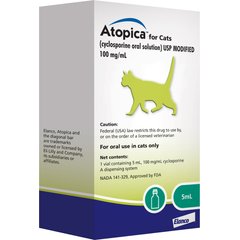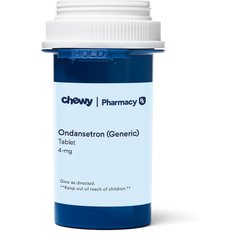Cat Allergies: Types and Symptoms
Valery Bocman/iStock / Getty Images Plus via Getty Images
An allergy is an immune response sensitivity to certain substances that cause allergic reactions. These are classified as antigens or allergens.
Typically, allergens are inherently harmless (like pollen, foods, or dust), but in certain individuals, the body overreacts and stimulates an inflammatory response that causes allergy symptoms.
Key Takeaways
- It's very common for a cat to have allergies.
- Cats can be allergic to a variety of things.
- With time, the commitment of loving pet parents, and a close relationship with a veterinarian, cat allergies can be managed.
Can Cats Have Allergies?
Yes! Cats can have allergies. In fact, they are extremely common in cats.
Cats with multiple types of allergies are more difficult to diagnose, treat, and manage.
Allergies are typically a life-long condition that can impact a cat and pet parent’s quality of life.
While some breeds may be more prone to allergies, they can occur in all cats. Purebred cats are more likely to have airborne allergies than domestic short hairs.
Siamese cats tend to be more likely to have food allergies
Early intervention is critical to long-term success. As soon as you notice your cat may be suffering from allergies, call your veterinarian for an exam.
Types of Allergies in Cats
Veterinarians recognize these six major types of allergies in cats. These different types of cat allergies include:
-
Atopic dermatitis, or environmental allergies
-
Allergic contact dermatitis—when an allergen comes into direct contact with the skin to cause a rash
-
Cutaneous drug eruptions—skin reaction to a medication
-
Allergic bronchitis (feline asthma)
Signs and Symptoms of Allergies in Cats
Common symptoms of allergies in cats include:
-
Excessive scratching or licking, including overgrooming
-
Sores, scabs, crusting, tiny lumps/bumps, or acne
-
Areas of flat, reddened, swollen skin (eosinophilic plaques)
-
Areas of hair loss or thinning hair, poor or unkempt hair coat
-
Coughing, wheezing
-
Upset stomach (vomiting, diarrhea, change in appetite)
-
Facial swelling (most common around the lips, nose, and eyes)
-
Hives
Difficulty breathing in cats is a veterinary emergency. If your cat is breathing with his mouth open or has labored breathing, seek veterinary care immediately.
What Are Cats Allergic To?
Cats can be allergic to a variety of things—so let’s look at the most common allergens to affect cats.
Food
The cause of food allergies in cats is poorly understood. Any protein, carbohydrate, preservative, additive, or dye can be potentially allergenic.
Typically, a cat’s immune system is overstimulated by a protein. The most frequently reported allergies are beef, fish, and chicken.
While cats can have allergies to grains, corn, or gluten, it is far less common than the main protein sources.
Some studies indicate Siamese cats and cats under 6 months old may have higher rates of developing food allergies.
Their Environment
Atopy, or environmental allergies, is characterized by inflamed, itchy skin disease. Genetic causes are not well documented in cats, but atopy occurs more often in Abyssinian, Devon Rex, and domestic short-haired cats less than 3 years old.
The most common causes of atopy are:
-
Pollen
-
Mold spores
-
Yeast
-
Dust and storage mites
-
Animal or human dander
Allergic contact dermatitis is rare in cats and involves a delayed hypersensitive reaction at the site of contact with:
-
Plants (pollen, grasses, trees)
-
Medications (topical drugs, ear medications, soaps, shampoos, insecticides)
-
Home furnishings (fibers, dyes, polishes, cleansers)
-
Other (rice flour, chlorinated water)
Fleas
Flea allergic dermatitis occurs as a hypersensitive reaction to the flea’s saliva.
Cutaneous Drug Eruptions
Any drug can cause a cutaneous drug reaction. It can happen after one dose or multiple doses.
More common drugs that cause a drug eruption include antibiotics, anticonvulsants, antihypertensives, NSAIDs, and antiarrhythmic drugs.
Allergic Bronchitis
Asthma occurs when a cat’s immune system overreacts to allergen in the air causing airway inflammation and constriction of the airway.
Potential inciting allergens include:
-
Poor environmental hygiene
-
Dusty cat litter
-
Hair spray
-
Molds
-
Pollen
-
Powders
-
Air fresheners
Allergy Tests for Cats
Allergy tests for cats vary. Tests may include:
-
Skin cytology
-
Patch test for contact dermatitis
-
Intradermal skin testing
-
Radiographs (chest X-ray)
-
Elimination diet trial
-
Novel protein diet
-
Hydrolyzed diet
-
-
Blood work to look at white blood cells
Treatment for Allergies in Cats
Depending on the cause of your cat’s allergies, treatment may include:
-
Eliminating the offending food from your cat’s diet.
-
Steroids (prednisolone/prednisone)
-
Anti-diarrheal protocols including probiotics, a bland diet, and fiber and/or pectin supplementation
-
Anti-nausea medication like Cerenia or Ondansetron
-
Immunotherapy, or allergy vaccines
-
Immunosuppressive therapy or drugs, like cyclosporine
-
Immunomodulating drugs like oclacitinib (Apoquel)
-
Antibiotics and antifungals for secondary infections (Convenia or itraconazole)
-
Pain medications (Onsior or gabapentin)
-
Topical therapy
-
Antihistamines (chlorpheniramine)
-
Hospitalization
-
Oxygen supplementation
Recovery and Management for Allergies in Cats
With time, the commitment of loving pet parents, and a close relationship with a veterinarian, cat allergies can be managed. Your cat can enjoy a good quality of life.
Cat allergies can’t be cured, but with monitoring and early intervention if flare-ups do occur, cats can quickly return to normal.
Risk factors, especially with cats with atopy, include environments with long allergy seasons and high pollen levels.
Some allergies like flea allergies and contact dermatitis, become more severe and chronic as cats age. You can work with your vet to determine the best treatments to manage your cat’s allergies, given the specific diagnosis and their personality.
Allergies in Cats FAQs
How can you tell if your cat has allergies?
Cats with allergies typically have skin issues and are itchy. This doesn’t mean they have allergies, but it is a possibility. Only testing with your veterinarian can determine if your cat has allergies.
What can I give my cat for allergies?
Always talk to your veterinarian before administering any medications or supplements. Based on your cat’s specific allergy, it may be treated with a combination of food and medications.
What are the most common allergies in cats?
Food allergy and environmental allergies are the most common.
References
-
Etienne Côté, Ettinger SJ, Feldman EC. Textbook of Veterinary Internal Medicine: Diseases of the Dog and the Cat. Elsevier; 2017.
-
Tilley LP, Smith FWK. The 5-Minute Veterinary Consult: Canine and Feline. Lippincott Williams & Wilkins; 2005
-
Doerr DVM, DACVD, Katherine. Veterinary Information Network®, Inc. Contact Dermatitis, Allergic (Feline). October 2020.
-
White DVM, MS DACVD, Amelia. Veterinary Information Network®, Inc. Flea Allergic Dermatitis (Feline). March 2017.
-
Tater DVM, MPH, DACVD, Kathy. Laporte VMD, DACVD Carine. Veterinary Information Network®, Inc. Food Allergy (Feline). June 2020.
-
Tater DVM, MPH, DACVD, Kathy. Doerr DVM, DACVD, Katherine. Veterinary Information Network®, Inc. Atopic Dermatitis (Feline). June 2020.
-
White DVM, MS, DACVD, Amelia. Veterinary Information Network®, Inc. Cutaneous Adverse Drug Reactions (Feline). September 2021.
-
Rothrock DVM, Kari. Veterinary Information Network®, Inc. Bronchitis, Allergic (Feline). October 2021.
Featured Image: iStock.com/Pawzi




